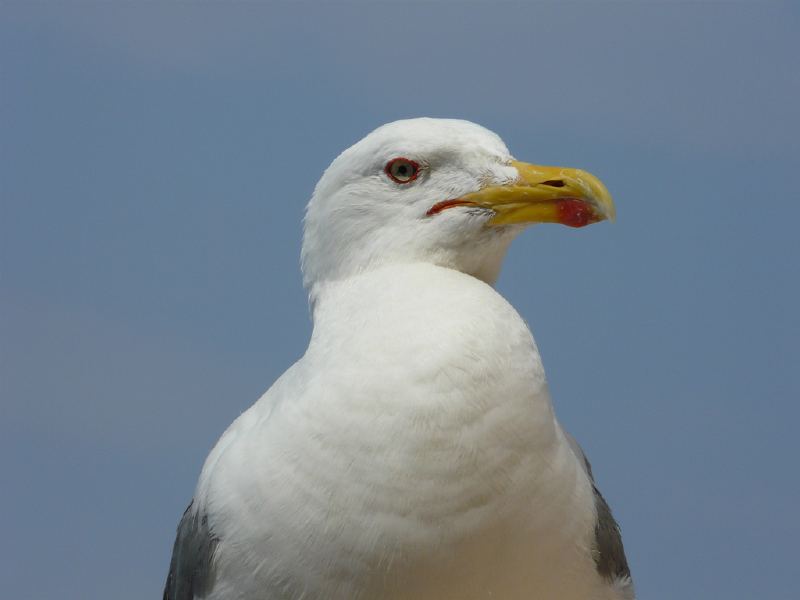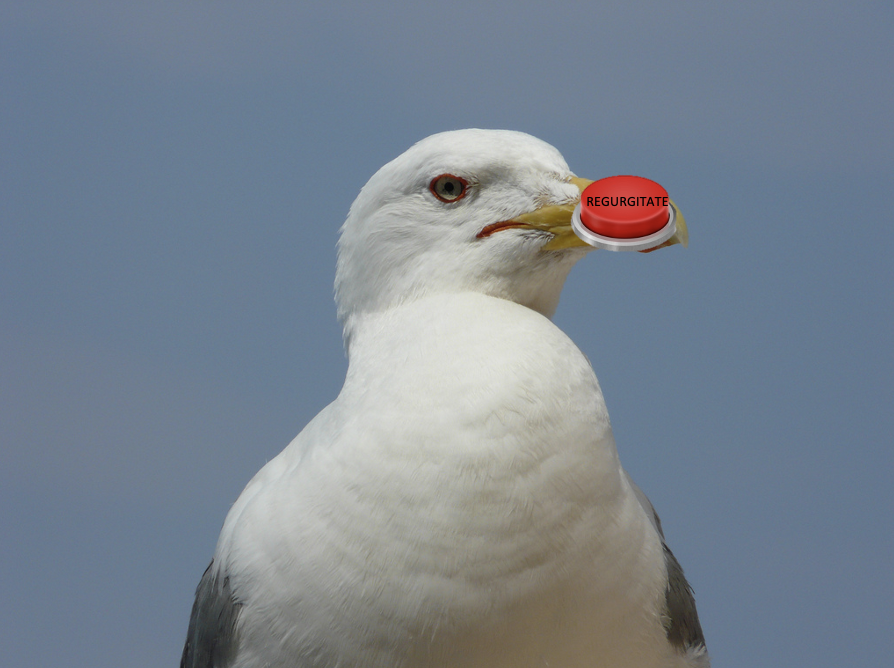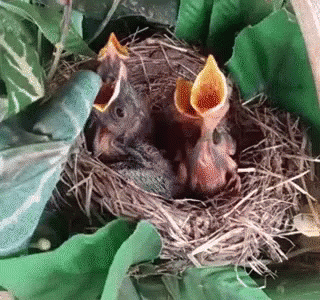Hi there — welcome to another Daily Fun Fact From Flora.
Today we are going to look at animal behaviour.
Now whenever scientists see an animal using a given behaviour there are four questions to be asked.
Us biologists like to divide those into two categories.
We have the ULTIMATE or EVOLUTIONARY questions. Adaptation = How does this behaviour help the animal? How does it make the animal more able to survive and reproduce? Phylogeny (fancy word for evolutionary history) = What did the behaviour evolve from ? i.e. how did the ancestors behave?
And then we have our PROXIMATE or CAUSAL questions Mechanism = What is the mechanism behind the behaviour? How does the animal decide to do this behaviour rather than a different one? Development = How does the behaviour develop in that individual? Is it learned? Is it innate? Do genes play a role?
Now we are going to have a look at question 3 — the mechanism (a bit random I know, but who needs sensible order nowadays). Now a lot of the time mechanisms behind animal behaviour come down to pattern recognition. Animals are able to recognise simple patterns in their environment and can use these to drive their behaviour.
The simplest form this takes is something called a sign stimulus. Here, the animal responds to just a small part of the huge array of stimuli in front of it and pretty much just ignore the rest. This might sound a bit crap but it can be super effective.
Let’s take a look at herring gulls. The adults have this big ol" red spot on their beaks.
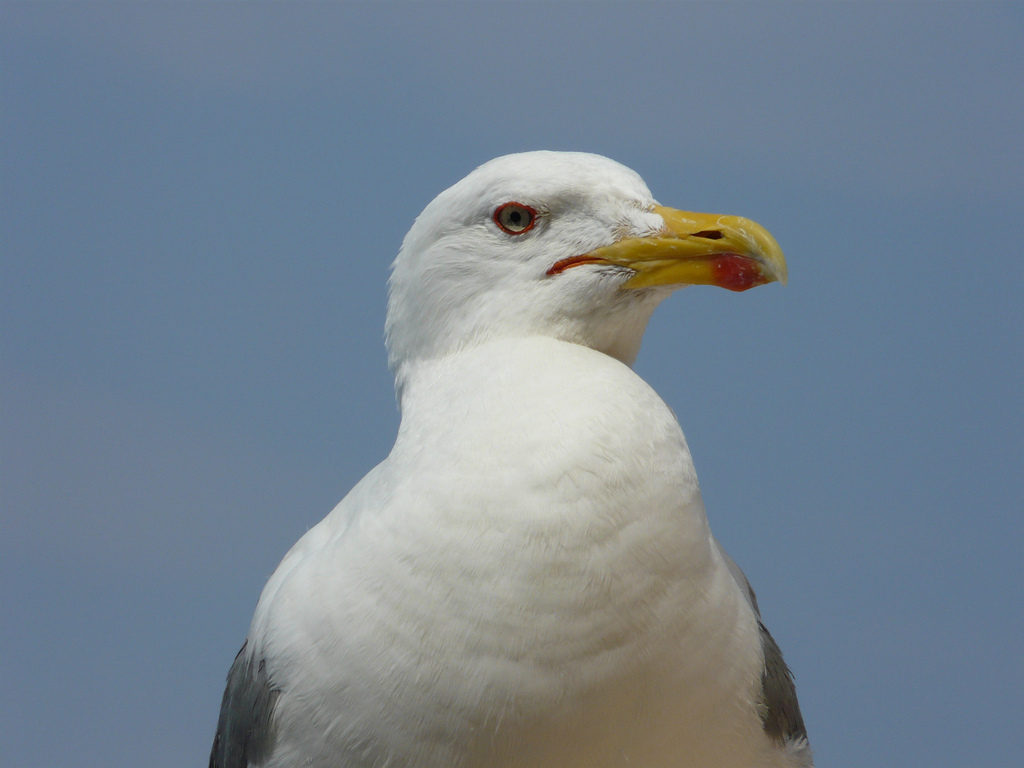
They also have some pretty funky looking eye makeup (or a really bad case of conjunctivitis ).
Now whilst this red spot may look like it’s there for the aesthetics, it actually acts as a sign stimulus for the little baby chicks. The chicks will peck at this red spot to get their parents to vom up some yummy food for them. So in many ways what the chicks see is this
What is interesting here is that chicks seem to only respond to this spot. They won’t peck heads that don’t have the spot and they will even peck crude cardboard models that do have the spot.
Now this sort of stimulus can be really effective but in order for it to work there are three criteria it has to fulfil: The signal has to be unique i.e. it can’t be found anywhere else in the environment, if there are other red spots in the environment this one won’t work The response has to be made quickly Hanging around here is no good. It needs to be almost instantaneous. The young has to be able to do it rapidly after birth There’s no opportunity for learning here. If the chick doesn’t know that that spot means lunch from the get-go then it’s not gonna survive
BUT this is a system that is vulnerable to mistakes.
A lot of birds don’t use red spots, but instead the parent birds are stimulated to feed their young when they see big open gaping mouths like this.
Now there is a bit of a problem here, because other species can exploit that instinct. Take the cuckoo for example. This poor little reed warbler is trying to feed this MASSIVE cuckoo that she thinks is her child not so ideal
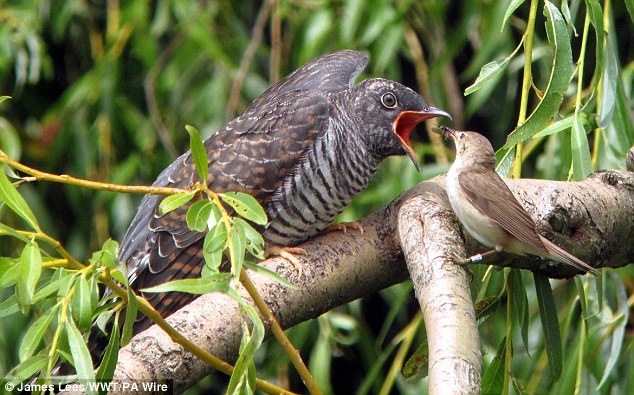
(this also happens to be a very accurate representation of what the Clark household will look like when Charlie comes back from Leeds)
What is even more bizarre (and this might be one of my all-time favourite photos) is that sometimes it’s a TOTALLY DIFFERENT SPECIES that exploits this sign stimulus.
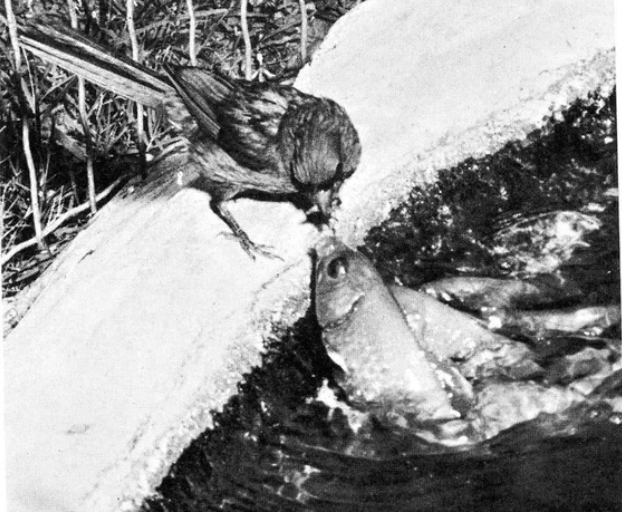
Now this poor little female cardinal recently lost her babies so has instead taken to feeding the fish in this garden pond instead. She is still responding to that big old gaping mouth stimulus , but now it is the mouth of a fish instead of a baby bird oops.
Sometimes these stimuli are a bit too simple.
But what’s weird is sometimes animals respond really strongly to stimuli that are waaaaay stronger than anything they would normally encounter in the natural world.
If we go back to our herring gulls — you can see that actually what they prefer most of all is not a parent with a red spot (A), or the beak with a red spot (B), or the whole parent without the red spot (C), but actually a red stick with white stripes on it (D).
THEY GO NUTS FOR IT.
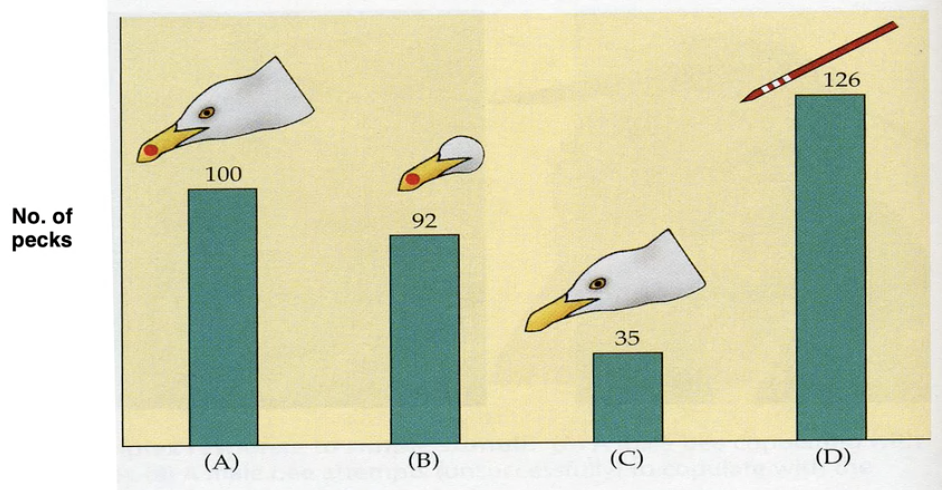
What these poor bastards will also do — is if you give them the choice between their own eggs and an ostrich egg guess which one they pick. Maybe they’re just totally convinced that they"ve laid this massive egg and they’re so chuffed about it they abandon all other eggs? Who on earth knows.
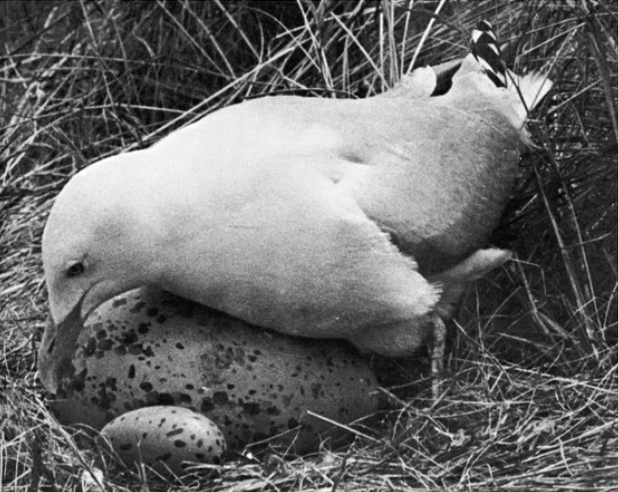
CHICK out that bad boy hehehe egg cellent
Humans are even vulnerable to this sort of stimulus, believe it or not. There’s an infamous study where you leave out an honesty box for people to pay for a communal supply of milk. You then either put a picture of eyes above the box or a picture of flowers and the results are pretty striking.
They swapped the pictures each week and you can see how the amount people paid zig-zags across the graph. It increases A LOT when there are eyes and goes back down where there are flowers.
Those last eyes were clearly the freakiest and most intimidating cos LOOK just how much money people were willing to pay for their milk when some random old dude was watching them.
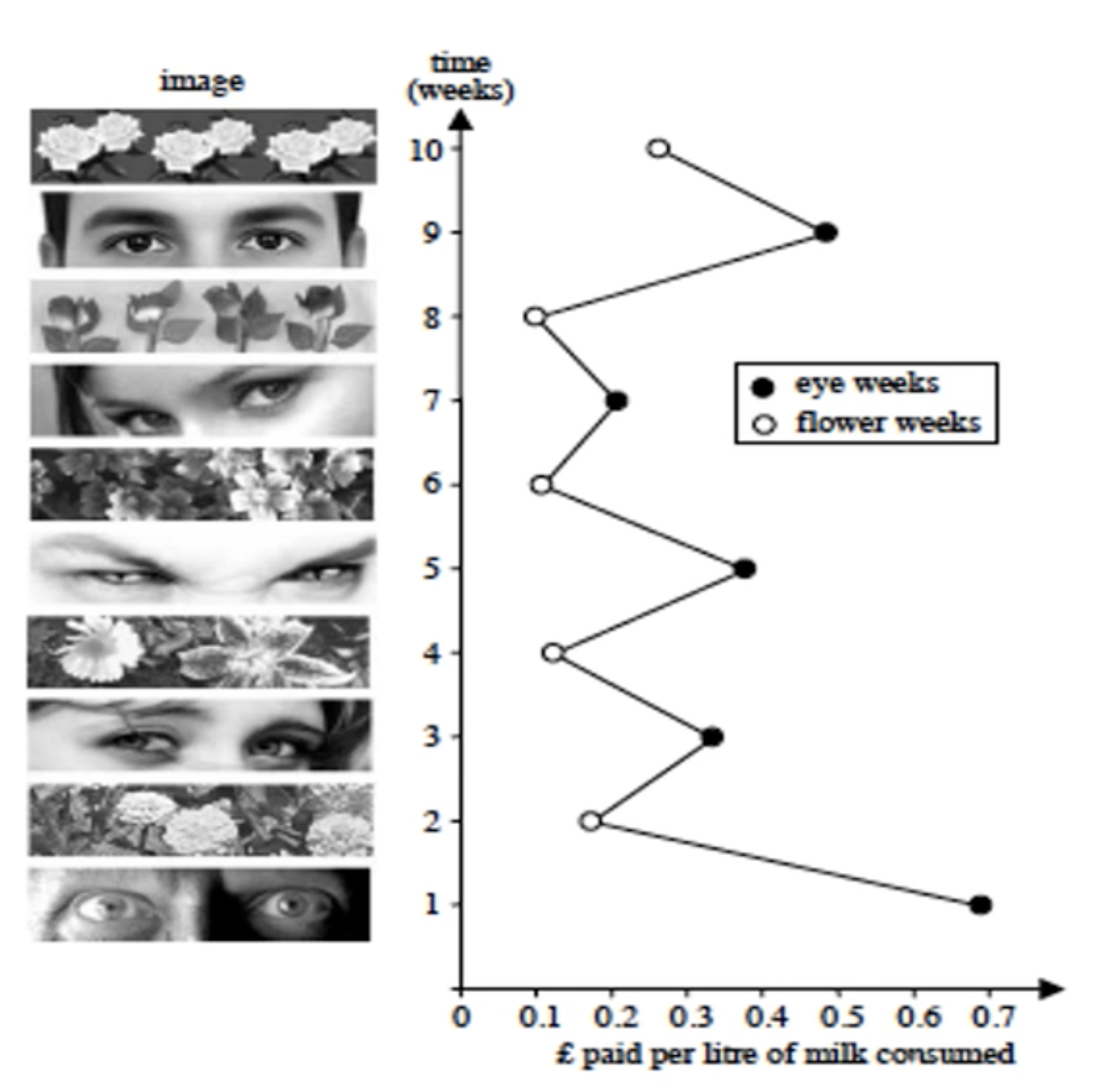
Which explains why you often see these signs around and about above bike stations.
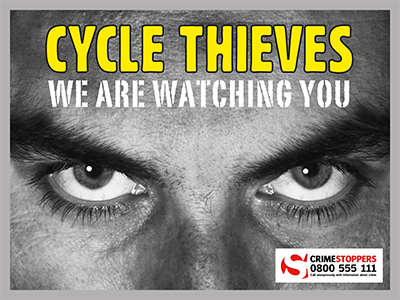
Trying to tap into your unconscious social human brain that forces you to act like a better person when you think other people are watching.
Hope you enjoyed this foray into the weirdnesses of animal behaviour.
See you next time!
Love Flora xxx
